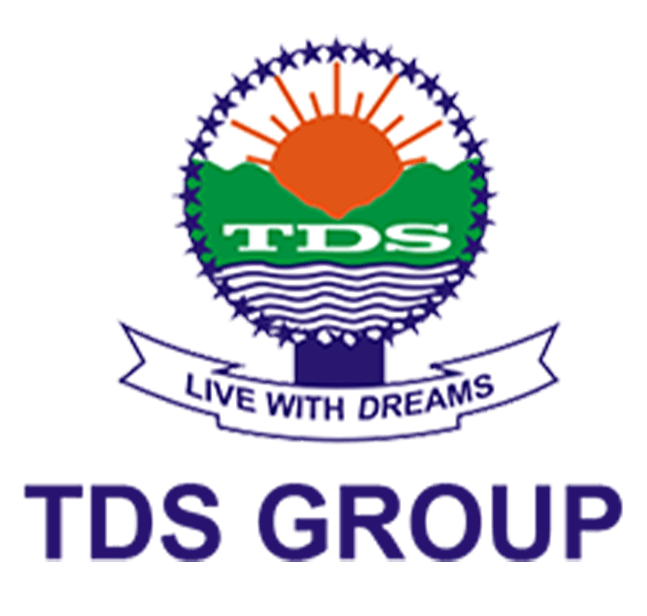Welcome to the TDS Group blog! In today’s post, we will explore 13 effective communication strategies that you can implement at work. Communication plays a crucial role in any successful business, and by mastering these strategies, you can enhance collaboration, productivity, and overall workplace satisfaction. Whether you’re a team leader, manager, or an employee looking to improve your communication skills, this blog post is packed with valuable insights and practical tips to help you thrive in a professional setting. So let’s dive in and discover how you can become a better communicator at work with TDS Group!
What do you mean by Effective Communication exactly?
This kind of communication refers to the skill of conveying information clearly, accurately, and in a way that is easily understood by the intended audience. It involves active listening, clarity of expression, empathy, and adapting the message to suit the context and needs of the recipients, leading to successful communication outcomes.
Why is effective Communication mandatory in the workplace?
This Communication is crucial in the workplace as it fosters understanding, collaboration, and productivity. Effective Communication means that instructions, goals, and expectations are clearly conveyed, minimizing misunderstandings and conflicts. It promotes teamwork, builds strong relationships, and enhances employee morale, resulting in a positive work environment and successful outcomes.
Benefits of Effective Communication at Work
1. Clear Understanding: Effective Communication ensures that messages are conveyed clearly, leading to a better understanding of tasks, goals, and expectations among team members.
2. Improved Collaboration: By promoting open dialogue and active listening, effective communication enhances collaboration, teamwork, and the sharing of ideas and expertise.
3. Increased Productivity: Clear and concise communication minimizes misunderstandings and reduces errors, resulting in improved efficiency, streamlined processes, and increased productivity.
4. Stronger Relationships: Effective communication builds trust, respect, and rapport among colleagues, fostering stronger relationships and a positive work environment.
5. Conflict Resolution: When open and transparent communication, conflicts can be addressed promptly and resolved effectively, maintaining harmonious relationships and minimizing disruptions.
6. Enhanced Decision Making: Effective communication ensures that relevant information is shared, enabling informed decision-making based on accurate data, diverse perspectives, and stakeholder input.
7. Employee Engagement: When employees feel valued and heard through effective communication, they become more engaged, motivated, and committed to their work and the organization.
8. Clear Direction: Effective communication provides clear direction, guidance, and feedback, helping employees understand their roles and responsibilities, leading to greater clarity and focus.
9. Customer Satisfaction: Effective communication with customers and clients ensures their needs are understood and met, improving satisfaction, loyalty, and positive business outcomes.
10. Innovation and Adaptability: Effective communication encourages the exchange of diverse ideas, feedback, and suggestions, fostering innovation, adaptability, and continuous improvement within the organization.
Effects of lack of Effective Communication
1. Misunderstandings: Poor communication can lead to misunderstandings, misinterpretations, and confusion among team members, resulting in errors, delays, and inefficiencies.
2. Decreased Productivity: Lack of effective communication can hinder workflow, delay decision-making, and decrease overall productivity within the organization.
3. Conflict and Tension: Communication gaps and breakdowns can give rise to conflicts, disagreements, and strained relationships among team members, leading to a negative work environment and decreased morale.
4. Missed Opportunities: When communication is ineffective, important information, ideas, and opportunities may be overlooked or not properly shared, resulting in missed chances for growth, improvement, and innovation.
5. Decreased Trust and Engagement: Insufficient communication erodes trust and confidence among colleagues and between employees and management. It can also lead to disengagement, apathy, and a lack of commitment to the organization’s goals.
6. Customer Dissatisfaction: Inadequate communication with customers or clients can result in misunderstandings, unmet expectations, and dissatisfaction, damaging the organization’s reputation and potentially leading to loss of business.
7. Inefficient Decision-Making: Lack of clear and timely communication can hinder decision-making processes, as important information may need to be properly shared or considered, leading to suboptimal or delayed decisions.
8. Increased Stress: When communication is ineffective, employees may experience heightened stress levels due to unclear expectations, conflicting information, and a lack of guidance or support.
9. Decreased Innovation: Lack of communication stifles the exchange of ideas, feedback, and creative thinking, limiting the organization’s ability to innovate and adapt to changing circumstances.
10. Poor Organizational Performance: Ultimately, the cumulative effects of inadequate communication can result in poor overall organizational performance, lower employee satisfaction, and reduced success in achieving goals and objectives.
13 Effective Communication Strategies To Implement At Work
Here are 13 Effective Communication strategies you can implement at work to improve communication and collaboration among your team.
1. Listen actively
Active listening is one of the most essential communication skills you can develop. It involves giving full attention to the person speaking, asking clarifying questions, and paraphrasing what you heard to ensure you understand their message correctly.
2. Be clear and concise
Strategies for effective communication emphasize being clear and concise. Avoid jargon or complex terms, ensuring that colleagues comprehend your message. Stick to the main points, use simple language, and avoid straying off-topic to ensure efficient team communication.
3. Use body language
Effective communication skills extend beyond words; body language is pivotal. It can reveal mood, attitude, and intentions. Maintain eye contact, nod, and smile to demonstrate engagement and interest in a conversation, enhancing the clarity and effectiveness of the interaction.
4. Avoid distractions
Effective communication in the workplace necessitates a distraction-free environment. When engaging with colleagues, avoiding disturbances like checking your phone or surfing the web is crucial. Offering your complete attention signifies respect, demonstrating that you value their time and contributions. A focused interaction fosters understanding and productive dialogue.
5. Be open-minded
Being open-minded is essential for embracing diverse perspectives. It means genuinely listening to and considering other people’s opinions and ideas, even if they differ from your own. This approach nurtures a collaborative atmosphere where everyone’s input is appreciated, and each individual feels valued, paving the way for a more inclusive and harmonious work environment.
6. Use positive language
Positive language can create a more positive work environment and promote collaboration and teamwork. Avoid negative language or criticism, and focus on finding solutions and working together to achieve common goals.
7. Be proactive
Effective communication strategies in the workplace call for a proactive approach. Instead of waiting for issues to arise, actively initiate conversations with team members. By taking the lead and addressing potential communication challenges head-on, you pave the way for a smoother, more cohesive working environment. Anticipating needs and addressing concerns upfront fosters trust and collaboration.
8. Avoid interruptions
Strategies for effective communication emphasize the importance of patience and respect. Interrupting someone mid-sentence can be perceived as dismissive and impede the flow of conversation. To foster a constructive dialogue, waiting until the person has completed their thought is crucial before offering a response or posing questions. This approach ensures both parties feel valued and understood.
9. Use appropriate humour
Humour can be a great way to break the ice and create a more relaxed atmosphere. However, it is important to use appropriate humour that is not offensive or disrespectful to others.
10. Use technology wisely
Technology can be a great tool for communication, but it can also be a distraction. Use technology wisely and avoid sending unnecessary emails or instant messages that can clutter inboxes and waste time.
11. Clarify expectations
Clarifying expectations can help avoid misunderstandings and ensure everyone is on the same page. Ensure that everyone understands their roles and responsibilities and their expectations.
12. Provide feedback
Providing feedback can improve performance and promote learning and growth. Be specific and constructive in your feedback, and focus on behaviours and actions rather than personal traits.
13. Follow up
Following up on conversations and actions can ensure that tasks are completed, and everyone is on track. This can also build trust and reinforce the importance of communication in the workplace.
Conclusion
In conclusion, effective communication is the linchpin for a thriving workplace. It fosters understanding, reduces conflicts, and promotes collaboration, ultimately enhancing productivity and employee satisfaction. To be a proficient communicator, one must actively listen, remain open-minded, utilize technology judiciously, and ensure clarity in all interactions. However, as with any skill, mastering communication takes practice and guidance. To bolster your organization’s communication prowess and foster a more cohesive work environment, consider leveraging TDS Group’s “Training & Development Services.” With our expertise, you can ensure that every conversation counts towards your business success.



